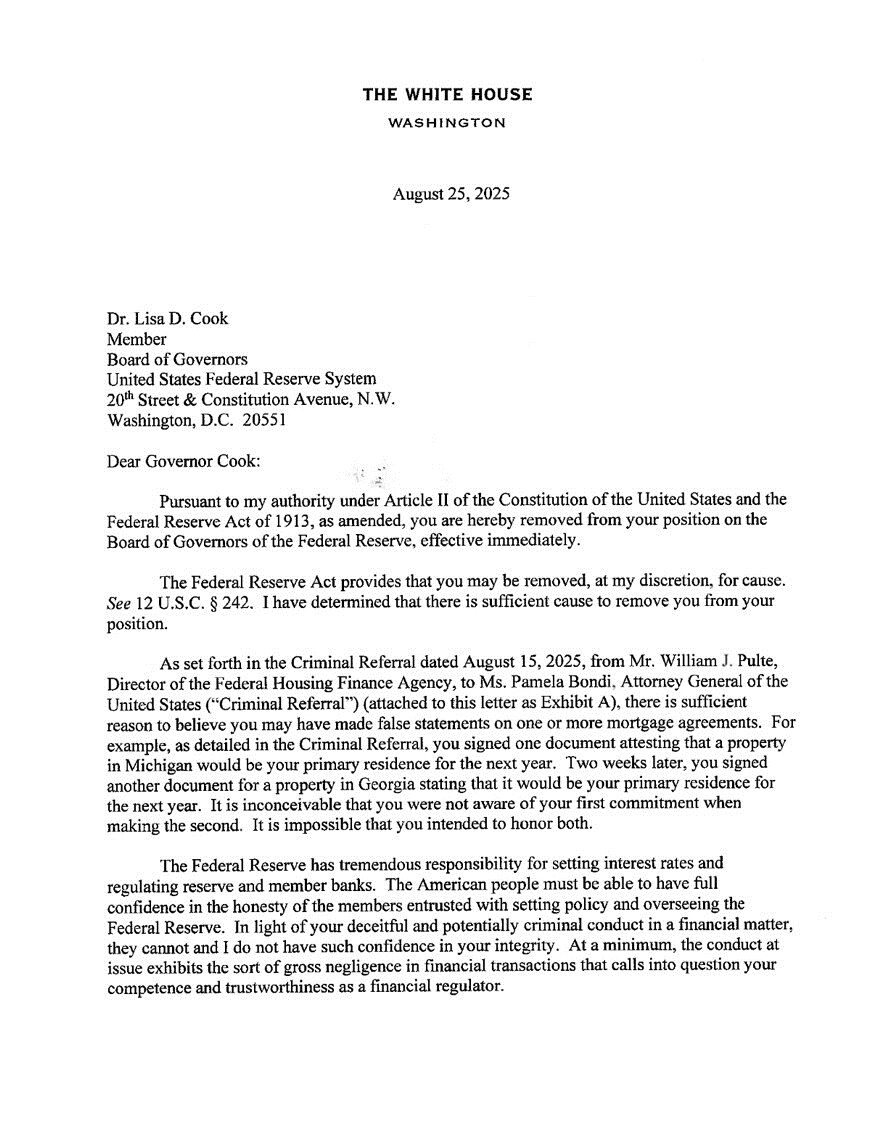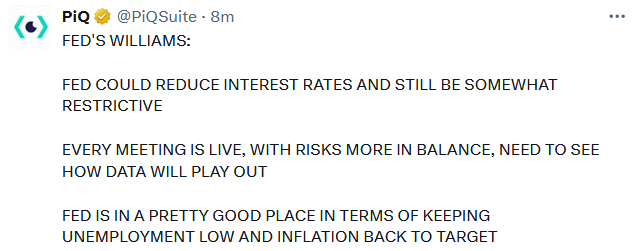President Trump fired Fed Governor Lisa Cook for cause. The President claims,
There is sufficient reason to believe you may have made false statements on one or more mortgage agreements.
This is the first time in the 112-year history of the Fed that a President has fired a Fed Governor. Cook is fighting the dismissal, claiming:
President Trump purported to fire me for cause when no cause exists under the law, and he has no authority to do so.” Given her stance, this issue is likely to be fought in the courts, with no quick resolution.
Between the constant barrage on Fed Chairman Powell from the President, the sudden retirement of Fed Governor Adriana Kugler, and the latest firing of Lisa Cook, the Fed is mired in a soap opera of change. Let’s step back from the headlines and appreciate Lisa Cook’s role at the Fed and why her seat is important for Trump. Cook is one of seven Fed Governors.
Fed Governors serve 14-year terms and, importantly, are permanent voting members of the FOMC committee, which sets monetary policy. The New York Fed President is also a permanent voting member. The remaining four seats rotate among the other 11 Federal Reserve presidents.
By removing Cook and replacing the seat with someone of his choosing, Trump will indirectly set the tone for monetary policy for years to come. If Cook is replaced and Congress approves Miran to replace Kugler, Trump will have appointed four of the seven permanent voting members. Further, he will replace Chairman Powell in 2026, pushing the number to five and, importantly, accounting for almost half of the 12 FOMC votes.
Simply, those with dovish views are quickly gaining more voting power. Furthermore, Trump’s wishes for a significantly lower are coming closer to reality.
This Weekend’s Kickoff In The Big Business Of College Football
This weekend, the college football season kicks off in earnest. NCAA football has become a significant business for colleges and some corporations. For instance, total revenues for NCAA Division I Football Bowl Subdivision (FBS) schools are projected to reach nearly $12 billion this year.
The dominant conferences, such as the SEC and Big Ten, are each expected to earn almost $2.5 billion each, with some schools earning approximately $100 million in revenue. A good portion of the money comes from media rights deals, sponsorships, ticket sales, and the NCAA playoffs.
It’s not just the colleges benefiting from football. The media, including broadcasters and streamers, have multi-year, multibillion-dollar rights deals. While they pay a substantial fee for the rights to broadcast the games, they also earn significant profits through advertisements, carriage fees, and subscriptions. In addition, the NCAA playoffs are a separate, multibillion-dollar arrangement that boosts profits for many other media interests.
Moreover, non-college beneficiaries include apparel brands with outfitting deals, ticket vendors earning fees on secondary sales, data firms licensing statistics, sportsbooks and fantasy platforms buying sponsorships, agencies and NIL collectives brokering endorsements, and bowl organizers/host cities earning from tourism and corporate hospitality.
Tweet of the Day

